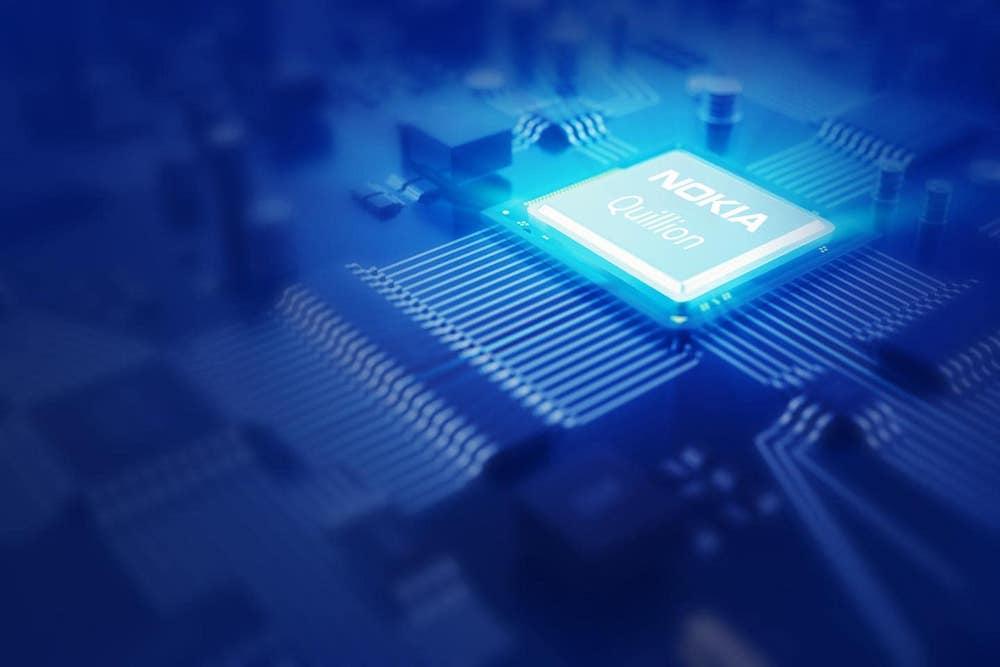You can never be too rich or too Finn
Nokia has announced that it is running a 10G broadband network for operator Valoo in Finland. The deal includes fibre access nodes for the central office and Nokia’s Altiplano broadband access controller, which includes software defined access networking (SDAN) capabilities. The new network will connect 200,000 homes in and around 30 cities by the end of 2026. With Nokia’s Quillion (see picture below) chipset at the heart of the solution, the XGS-PON installation is ready for passive optical networking shifting data at 25 gigabits per second come the time when Valoo chooses to add more capacity.
Valoo CEO Tommi Linna that that the key to the health of Finnish mobile operators is a strong lithe backbone with minimal carbs (carbon dioxide emissions). Nokia’s Lightspan multi-gig fibre broadband is the solution to its problems. Linna said the techniques used by Nokia’s infrastructure surgeons and the aftercare offered by its photonic therapists enables multiple customers to use the same limbs of fibre. This dilates the capacity for connections and boosts the circulation of data, the lifeblood of any information dependent body, to 20 gigabits per second and beyond.
With the insert of Nokia’s new Altiplano controller the Finnish communications service provider can offer advanced open access networks to the consumers of one of the world’s healthiest economies. “Nokia’s multi-gig fibre has a 95 per cent smaller carbon footprint thanks to its energy efficiency gains compared to traditional point-to-point solutions. I couldn’t be more proud that we are the first fibre company in Finland offering multi-gig connections to customers from spring,” said Linna. Finland’s information economy foundation is one of Europe’s best funded public resources. According to Visit Finland, research shows that people of Valoo and Helsinki (pictured above) are the happiest in the world. This could be related to the well ordered infrastructure described in Nokia’s statement, that provides the right work life balance.
Valoo (Adola Oy) is wholly-owned by DIF Capital Partners, an independent infrastructure equity fund controlling more than €15 billion of investments globally. Valoo focuses on fibre broadband access and is embarking on ambitious large scale installations in the Finnish market. In February this year the company announced that in addition to building fibre networks it will offer its own internet service subscriptions iand make its network available to third party operators. “Valoo has laid the foundation for automation in the broadband access network, which is essential for operators looking to innovate with advanced digital broadband offerings while keeping their operational expenditure under control,” said Sandy Motley, Nokia’s president of fixed networks, “[and it has done it] with our Altiplano controller.”
Nokia’s Altiplano Access Controller is a suite of network management and software defined networking control functions. Together they automatically coax the best performance out of broadband networks by constantly fine tuning them. Altiplano automates network lifecycle management activities and provides operators a single view of the entire access network domain. It has an open modular design based on the requirements of cloud computing, which means catering for micro-services controlled via open application programming interfaces. Ultimately these let operators integrate everything more easily, across all the various sub-systems such as OSS/BSS, IT and cloud platforms. It all means that each operator’s own applications can be applied more easily.
Nokia 7360-FX Lightspan series access node (OLT) is used for industrial scale fibre rollouts. Usually located in telecom central office, it connects thousands of users via optical fibre, aggregates their broadband traffic and sends it deeper in the network. The fibre access node supports every fibre technology available, including GPON, XGS-PON, 25GS-PON and Point-to-Point Ethernet, so that all eventualities are catered for.
Nokia Lightspan MF-2 is the industry’s first family of software-defined fiber access nodes designed to provide non-blocking delivery of massive scale, high-speed broadband services with 25G PON, 50G PON and beyond.



